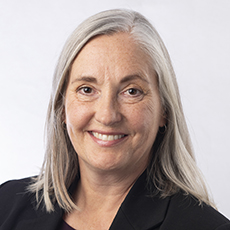Why are teachers leaving the profession and what can be done about it?
In the United States during the 2022/23 school year, the lack of teachers to fill jobs is grabbing headlines nationwide. This is not a new problem. For example, in 2016, Sutcher et al. pointed
out that “between 1989 and 2005, attrition rates increased by 50%, and they have stayed high since then” (p. 39). At this time, it is not known how the COVID-19 pandemic will impact teacher attrition over the long term, but Diliberti et al. (2023) found in a nationally representative sample of school districts that “10 percent of their teachers retired or resigned at some point during or after
the 2021–2022 school year, which is a 4 percentage point increase” (p. 2) over previous years. Troublingly, school district leaders noted even higher turnover among principals. “District leaders estimated that 16 percent of their principals retired or resigned in 2021–2022” (Diliberti et al. 2023, 3), doubling from the school year prior. Consequently, there is deep concern about teacher shortages across the U.S. because there are not enough qualified teachers to fill positions.
What causes teacher attrition and what can be done?
Inadequate compensation
Teacher salaries across the United States vary, but “the evidence suggests that for financial incentives to work, they have to be large enough to compensate for the challenges of working in less desirable schools or areas, or to compensate for the salary that teachers would receive if they had been in a comparable profession” (Carver et al. 2022, 25). Given that one in six teachers holds a second job according to the Pew Research Center (2019) and that teachers leave the profession at high rates, it is clear there is a need to address low salaries. In March 2023, in the wake of teacher shortages across many states, the Pay Teachers Act, which proposed to set a national minimum wage for teachers of $60,000, was introduced to Congress. While financial incentives such as higher salaries, loan forgiveness, housing support and child-care support may help entice people to teaching, they must be considered alongside other factors in building career commitment to the profession of teaching.
Conditions of practice
Sutcher et al. (2016) write that “in many states and districts, relatively little attention is paid to supporting teachers after they have joined the profession” (p. 39). In examining organizational factors that contribute to teachers leaving their jobs, Ingersoll (2001) notes that “‘teachers departing because of job dissatisfaction link their decision to leave to inadequate administrative support, isolated working conditions, poor student discipline, low salaries and a lack of collective teacher influence over schoolwide decisions’” (Haynes 2014, 4). In other words,
conditions of practice matter.
How might conditions of practice be improved on an organizational level? There are many interrelated solutions that could be implemented to improve the professional conditions within which teachers and principals work. First, proper credentialing, mentorship and residency programs help prepare teachers and principals to manage the challenging circumstances that can arise during a school day (Sutcher et al. 2016; Carver et al. 2022). Second, class sizes and specialized supports for students with exceptional needs are needed to help mitigate teacher and school leader workload (Carver et al. 2022). Third, according to Education International (2022), “High stakes and punitive accountability must be replaced with systems that trust teacher professionalism and teachers’ professional decision making. Professional autonomy as well as academic freedom must be guaranteed” (p. 11).
While Education International does not direct this comment at any one country, the United States has adopted several educational reforms such as No Child Left Behind that, in their reliance on test scores to measure the worth of a school’s or teacher’s performance, have been highly destructive for American public education and the teaching profession. Further, teacher and school leader voices were not considered in these reform movements, and if meaningful improvement is to be made in public education, the expert voice of the teaching profession must be included.
Burnout
The COVID-19 pandemic has exacerbated the stressful conditions experienced by teachers and school leaders, in part because it intensified teacher and school leader work by way of “the implementation of COVID-19 mitigation policies … school staff shortages, the compounded effects of student trauma and behavior concerns, and interrupted student learning” (Steiner et al. 2022, 2). Steiner et al. (2022) explain that a result of this work intensification was that “about twice as many teachers and principals reported
experiencing frequent job-related stress as the general population of working adults in January 2022” (p. 5).
Carver-Thomas, Leung and Burns (2021) report that in California, teacher shortages also translated into an inability to attract qualified substitute teachers. As a result, teachers and school leaders, in addition to managing their own work, also provided coverage for colleagues unable to attend work both in the short and long term (p. 10).
As in Canada, the COVID-19 pandemic illustrated the fragility and importance of the public education system and social supports in the United States. District leaders in Carver-Thomas, Leung and Burns’s (2021) study express concern “that the stressors of managing the challenges of the pandemic on top of the challenges of increased workload could lead to teacher burnout and increased turnover rates” (p. 13). While the concerns regarding conditions of teacher practice were evident before the pandemic, some researchers are recommending a substantial organizational response to teacher and principal workload given the aggravating effect of COVID-19.
Conclusion
In January 2022, the National Education Association (NEA) released a nationally representative poll conducted by GBAO Strategies of its membership’s stress, burnout and intention to stay in the teaching profession. In its report, the NEA shares that “more than half (55%) of members say they are more likely to leave or retire from education sooner than planned because of the pandemic” (p. 2). This number is higher for Black educators (62 per cent) and Hispanic educators
(59 per cent). While intention to leave teaching does not necessarily translate into teacher resignations, this is not a figure that should be taken lightly. It
suggests that in the United States, there is an urgency to address long-standing issues of teacher compensation and conditions of practice.
Complete references are available from the author at lisa.everitt@ata.ab.ca.

Executive Staff Officer, ATA
Read more
View the entire digital issue of the ATA Magazine
See the latest issue